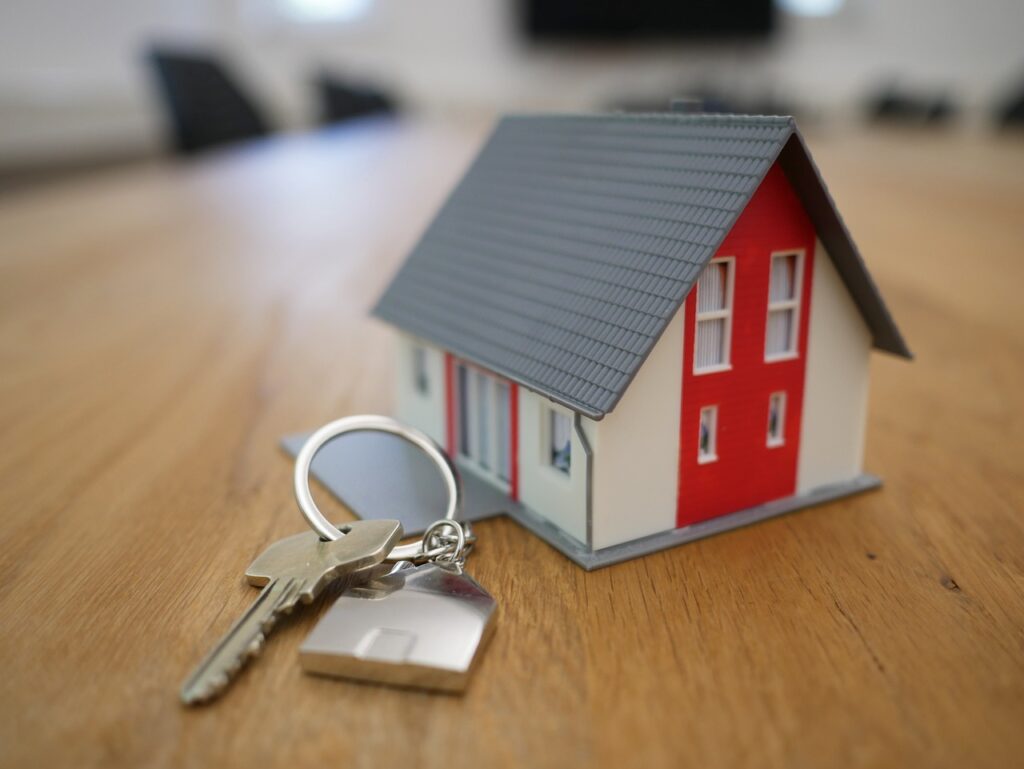How to Build a House in Kenya: A Complete Step-by-Step Guide
Building your dream home in Kenya is an exciting journey, but it can also feel overwhelming without proper guidance. From permits to costs, this guide explains step-by-step how to build a house in Kenya confidently.
The Dream of Home Ownership
For many Kenyans, building a home is the ultimate life goal. It represents stability, independence, and a long-term investment for future generations. Unlike renting or buying ready-made units, constructing your house gives you complete control over the design, finishes, and costs.
Yet, as exciting as it is, the process can be daunting. Many first-time builders wonder,
“I want to build a house on my land. Where do I start?”
This article by Construction Frontier provides a comprehensive step-by-step guide on how to build a house in Kenya. It covers everything from land preparation and building permits to construction costs, materials, and finishing. Whether planning a modest rural home or a modern townhouse in Nairobi, this guide will equip you with practical insights to make informed decisions.
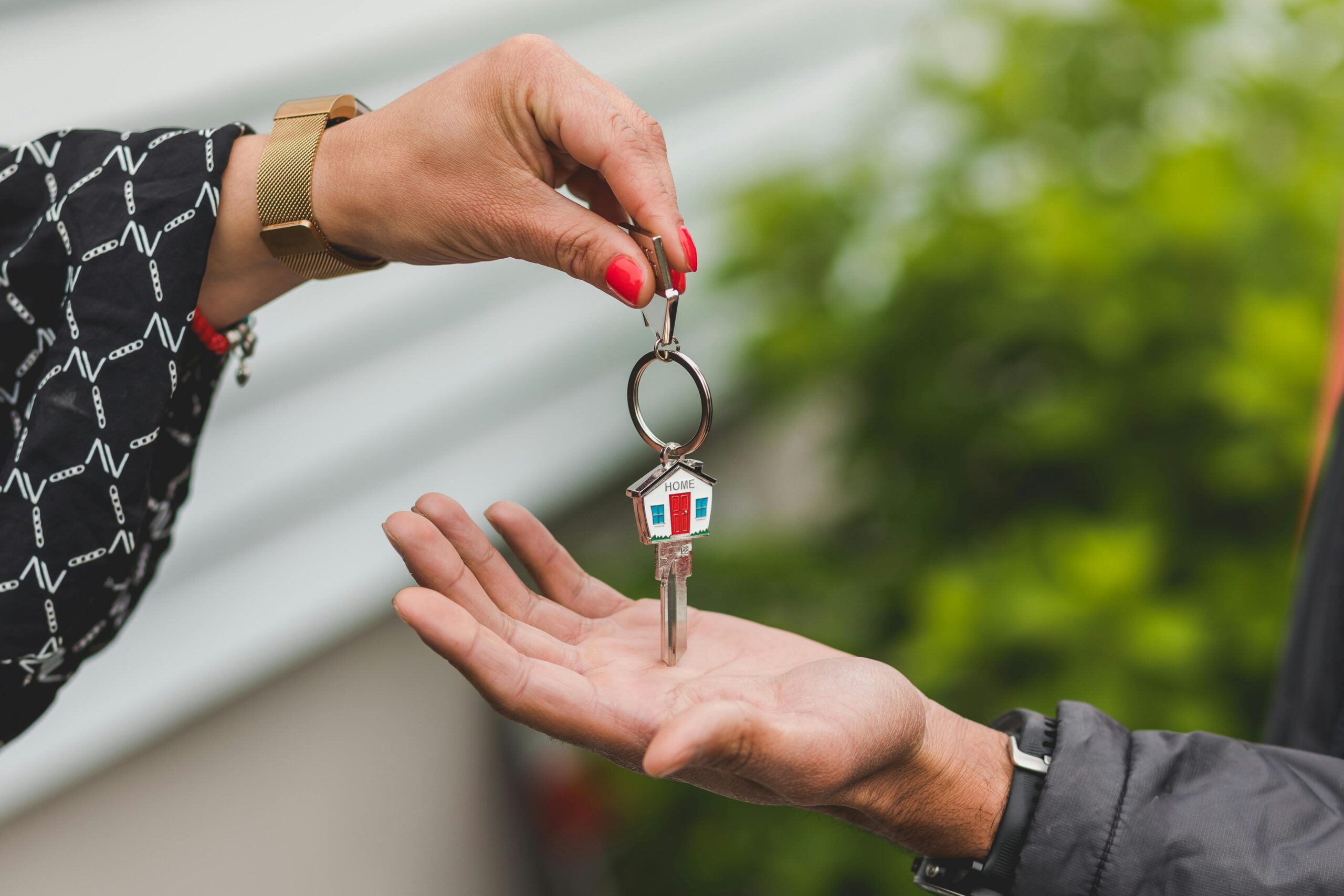
10 Practical Step-By-Step Approaches to Dream Home Ownership
Let’s begin by reviewing the checklist of the elaborate steps you need to learn and discover today as you prepare to construct your dream house.
Step 1: Land Ownership and Site Preparation
The first step in house construction is securing the land. You cannot begin building without proof of ownership, typically a title deed. Before making any purchase, conduct a land search at the Ministry of Lands to confirm that the seller is the rightful owner and that the land is free of disputes or encumbrances.
After purchase, consider conducting a land survey to mark boundaries and avoid future conflicts with neighbours. Site preparation may involve clearing bushes, levelling uneven ground, and fencing the property to prevent encroachment.
Accessibility also matters. Proximity to essential services like roads, water, and electricity significantly influences construction costs and convenience. A remote location without infrastructure may mean you’ll spend extra to bring in utilities.
Step 2: Understanding Building Permits in Kenya
Securing building approvals is one of the most critical steps in building a house in Kenya. Before starting construction, you must obtain permits from your county government, the National Environment Management Authority, and the National Construction Authority.
The documents required include:
(i) Architectural Drawings (Approved by a Registered Architect)
These are professionally prepared house plans designed by a registered architect. They show:
- The layout of rooms (floor plans).
- Elevations (front, side, and rear views of the house).
- Sections (cross-sectional views showing how the house is structured).
Why is it required?
- Ensures the house is functional and safe.
- Confirms that the design complies with county zoning laws, plot ratios, and building codes.
- Allows the county engineers to visualise the project before approving.
Tip: Always use a registered architect from the Board of Registration of Architects and Quantity Surveyors (BORAQS) to avoid rejection or legal issues.
(ii) Structural Plans (Approved by a Structural Engineer)
A registered structural engineer prepares these drawings. They detail the skeleton of the building, including:
- Foundation specifications (depth, reinforcement, and load-bearing details).
- Column and beam sizes.
- Roofing structures.
- Reinforcement for walls and slabs.
- Underground water tanks, basements, and septic tanks.
Why is it required?
- Ensures the house is structurally sound and won’t collapse due to structural failure.
- Confirms that the design can withstand local soil conditions, weather, and loads.
- Protects homeowners against risks like cracks, subsidence, or structural failure.
Tip: Counties insist on structural engineer approval because Kenya has seen many collapsed buildings caused by weak designs and poor workmanship.

(iii) Proof of Land Ownership
Proof of ownership is usually the title deed or a valid lease agreement (for leasehold property).
Why is it required?
- Proves that you are the rightful owner of the land.
- Prevents fraud or disputes during construction.
- The county government cannot issue a permit without proof of ownership since it needs assurance that you’re not building on encroached land.
Tip: If you purchased land, ensure the transfer is complete and the land search at the Ministry of Lands reflects your name before applying for permits.
(iv) Environmental Impact Assessment (EIA): If Applicable
An EIA licence, issued by the National Environment Management Authority (NEMA), is required if your project could significantly affect the environment.
You will need this if:
- You are building in environmentally sensitive areas (near rivers, forests, wetlands, etc.).
- The project is large-scale (e.g., apartments, estates, or commercial buildings).
- There is a potential impact on drainage, waste disposal, or natural habitats.
Why is it required:
- Ensures sustainable construction.
- Protects natural resources and ecosystems.
- Prevents legal disputes or stoppages by NEMA officers.
Tip: An EIA is usually not mandatory for residential homes in urban or rural areas. But it is compulsory for developments like flats or gated communities.
These documents assure county officials that your project is legal, safe, environmentally responsible, and structurally sound. Approval timelines vary by county and workload but typically take 30 to 60 days. Skipping this step can result in heavy fines or even the demolition of your dream house.
Step 3: Designing Your Dream House
Once permits are in place, the design stage begins. Here, you decide the type of house you want—a bungalow, maisonette, townhouse, or apartment block.
Hiring a registered architect ensures compliance with regulations and structural safety. While some fundis may offer cheaper “drawn plans”, professional input is invaluable for durability and legal protection. Alongside an architect, you need a registered structural engineer, a quantity surveyor (QS), and an MEP (Mechanical, Electrical, and Plumbing) engineer for other design aspects of your dream house. The architect can also do the interior design work for your house, or you can source a specialised interior designer for residential homes.
Your design should align with your budget, family needs, and lifestyle. For example, a rural retirement home may prioritise expansive gardens and verandas, whereas an urban one may emphasise compact layouts and modern finishes.

Step 4: Budgeting—The Cost of Building a House in Kenya
Understanding the cost of building a house in Kenya is essential before breaking ground. On average, construction costs range between KSh 35,000 and KSh 70,000 per square metre, depending on location, materials, and finishing.
(i) Build a Clear Cost Framework
Use a Quantity Surveyor (QS) to prepare a Bill of Quantities (BoQ), your single source of truth for scope and cost. It itemises materials, labour, preliminary conditions, and contingencies and becomes the basis for contractor pricing and payment certificates.
Typical cost buckets:
- Preliminaries & permits: approvals, site hoarding, temporary utilities, and insurances.
- Substructure: excavation, foundation concrete, blinding, and dampproofing.
- Superstructure: walling, columns, beams, slabs, and roofing structure.
- Services: electrical, plumbing, drainage, solar/backup power provisions.
- Finishes: plaster, paint, tiles/terrazzo/wood floors, ceilings, doors, wardrobes, sanitaryware, kitchen.
- External works: include installing a septic or soak pit, a sewer connection, walkways, a driveway, a gate or fence, and landscaping.
- Contingency: 10–15% for price escalations, scope clarifications, or surprises.
(ii) Finance Strategy
- Cash build (phased): Progress as funds allow—slower but interest-free.
- Mortgage or construction loan: Faster delivery; budget for disbursement stages and interest.
- SACCO financing: Competitive rates and flexible terms for members.
Tip: Align your cashflow curve with build milestones (foundation → shell → roof → finishes) so you don’t stall at cash-intensive phases like roofing and finishes.
(iii) Price Risk & Inflation
Material prices (cement, steel, timber) can swing. Insert:
- Escalation clauses for long builds (QS to draft).
- Early procurement of long-lead items (tiles, sanitary fittings) to lock prices.
- Alternative specifications (e.g., steel vs precast) are ready to pivot if prices spike.
You can self-finance, take out bank loans, or use SACCO financing. If you borrow, factor in interest rates and repayment terms.
Step 5: Choosing the Right Building Materials in Kenya
Your material choices drive durability, comfort, and lifecycle costs—not just upfront spend. Common building materials in Kenya include:
(i) Structural & Walling Options
- Machine-cut stone: Common, potent, thermally stable; confirm quarry quality and uniform density.
- Concrete blocks: Lightweight, fast; check compressive strength ratings.
- Burnt clay bricks/interlocking stabilized blocks: Aesthetic/sustainable; requires skilled laying and good curing practices.
Quality assurance: Insist on materials that meet the Kenya Bureau of Standards standards—see KEBS for relevant specs.
(ii) Roofing Systems
- Mabati (profiled sheets): Cost-effective, quick to install, and durable with proper gauge and anti-rust coatings.
- Clay/concrete tiles have a premium look, are heavier (a stronger structure), and offer excellent acoustic/thermal comfort.
- Shingles/stone-coated tiles: aesthetic edge; vet supplier warranty.
Tip: Factor in gutters, fascia, insulation, and ventilation (ridge vents/soffits) for comfort and roof longevity.
(iii) Services & Sustainability
- Plumbing: PPR pipes for hot/cold water; PVC for drainage; test all pressure lines.
- Electrical: Adequate circuits, RCD protection, surge protection, and earthing; plan for inverter/solar.
- Green choices: solar water heating, PV panels, rainwater harvesting, low-flow taps, and LED lighting. Explore guidance via the Kenya Green Building Society (KGBS).
(iv) Finishes That Balance Cost & Value
- Floors: Ceramic/porcelain tiles (durable), terrazzo (hard-wearing, low maintenance), and engineered wood (warmth, mid-to-high price).
- Walls/Ceilings: Plaster plus quality paint; gypsum ceilings for clean lines and acoustic control.
- Sanitaryware: Choose reputable brands with local spares support.
Eco-conscious builders are increasingly considering sustainable options such as solar panels, rainwater harvesting, and recycled materials—aligning with the push for affordable housing in Kenya.
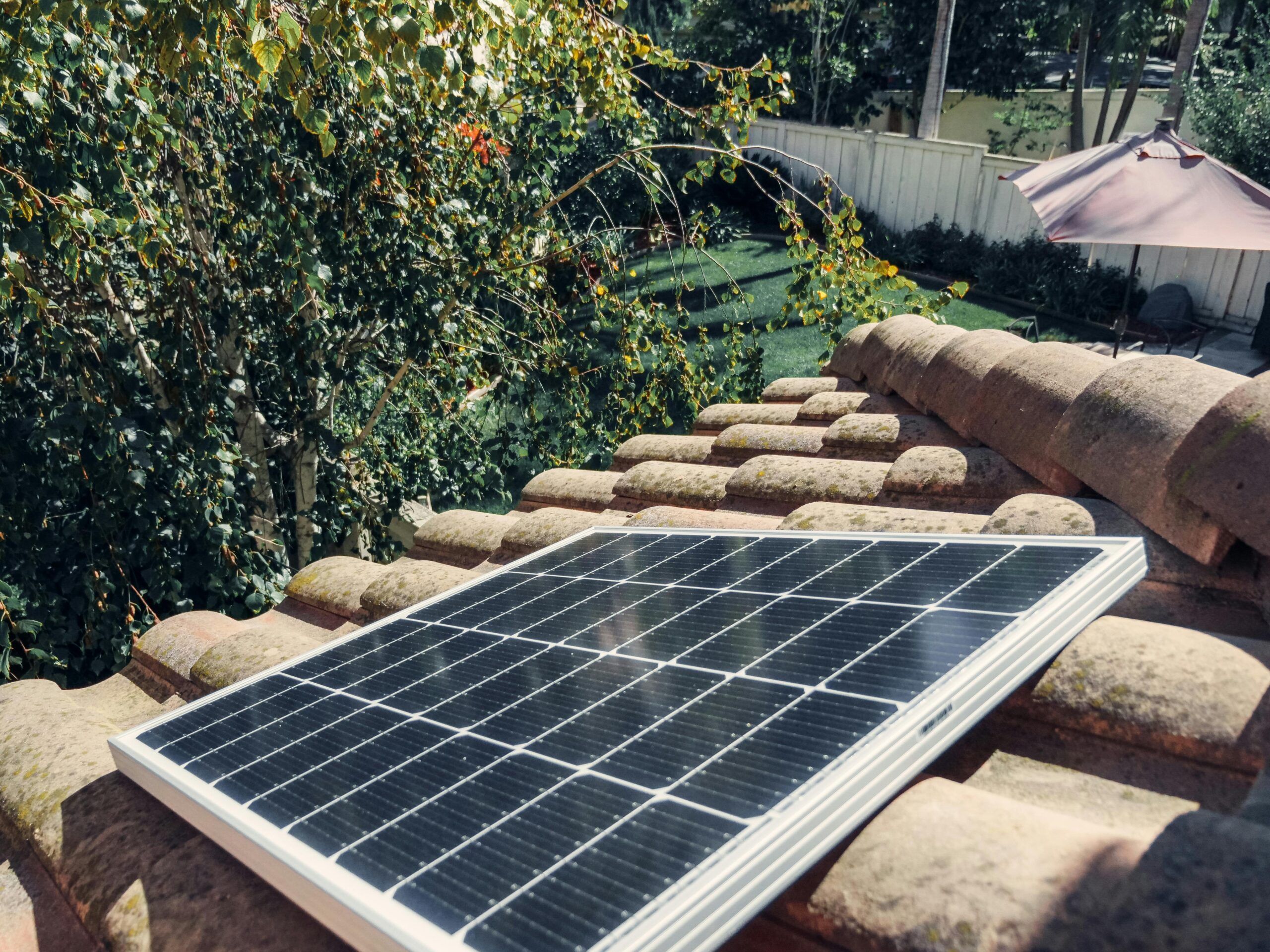
Step 6: The House Construction Process in Kenya
A well-sequenced build saves time and rework: the house construction process in Kenya generally follows these stages:
(i) Pre-Start
- Finalise drawings & BoQ (architect + structural engineer + QS).
- Secure county approvals and wayleave consents (if needed).
- If necessary, follow the guidelines of the National Construction Authority (NCA) for project registration and ensure that you have a registered contractor (search the NCA portal).
- Mobilise site: hoarding, welfare facilities, temporary power/water.
(ii) Substructure (Foundations)
- Setting out by a construction surveyor.
- Excavation to engineered depths; termite treatment where recommended.
- The installation of DPC/DPM involves blinding, reinforcement, and foundation concrete.
- Quality control checks include cube tests for concrete and inspections of steel placement.
(iii) Superstructure (Walls & Frame)
- Walling (stone/block), beams, columns, ring beams, lintels.
- Slab works (if multi-storey); ensure proper curing.
- Window/door frames in place to maintain tolerances.
(iv) Roofing
- Truss fabrication (treated timber or steel), sheeting/tiles, insulation, gutters.
- Flashings and waterproofing at penetrations/abutments.
(v) First Fix Services
- Plumbing: pipework for bathrooms/kitchen before plastering.
- Electrical: conduits, back boxes, DB location; leave draw wires.
- Drainage: external manholes and gradients; water test lines.
(vi) Internal & External Finishes
- Plaster: screeds, tiling, and painting system (primer + undercoat + topcoat).
- Joinery: doors, skirting, wardrobes, kitchen cabinets.
- Sanitary installation: test for leaks and proper falls.
(vii) Snagging & Handover
- Defects list (architect/QS/owner), rectifications, cleaning, and commissioning of services.
- Handover pack: warranties, as-built drawings, appliance manuals.
Tip: Schedule weekly site meetings and sign interim certificates for payments—QS-verified—at milestones (foundation, walling, roof, finishes).
Quality control is crucial. Ensure your contractor or engineer inspects every stage to avoid shortcuts that could compromise safety.
Step 7: Hiring Professionals vs Local Fundis
Building requires a balance between affordability and expertise. While hiring local “fundis” may seem cheaper, professionals like architects, structural engineers, and contractors guarantee quality, compliance, and accountability. To mitigate risks, here are some worthwhile steps:
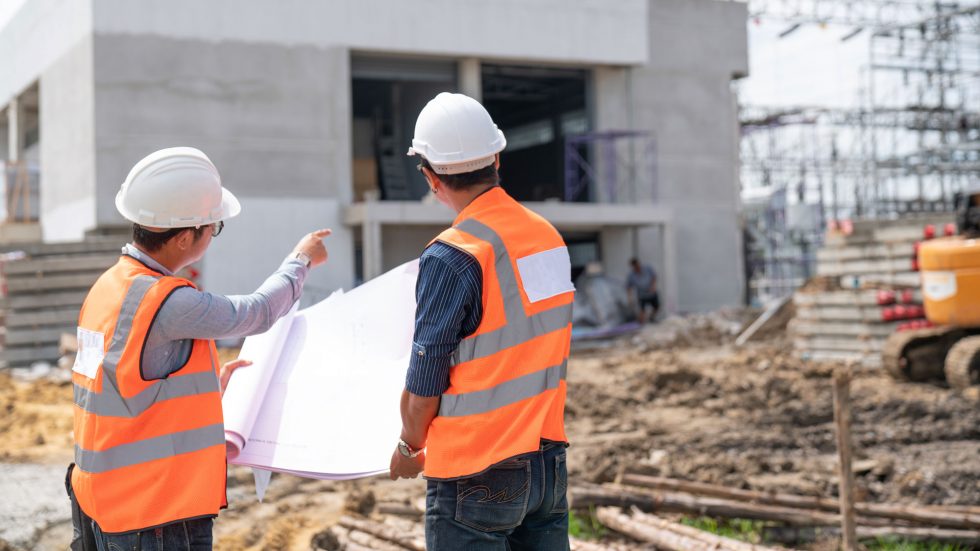
(i) The Core Team & What They Do
- Architect (lead consultant): Concept to approvals to site supervision. Registered by BORAQS.
- Structural Engineer: Responsible for structural design, structural integrity, and inspections. The project engineer must be a registered professional with the Engineers Board of Kenya (EBK).
- Quantity Surveyor (QS): Preparing BoQ, tendering, cost control, and valuation certificates.
- Contractor: Construction management, labour, schedule programme, safety.
- Clerk of Works/Site Supervisor: Day-to-day quality oversight (optional but valuable).
(ii) Procurement Routes
- Design–Bid–Build: Traditional; competitive pricing; more apparent risk separation.
- Design–Build: Provides a single point of responsibility; is faster; vets the design quality carefully.
- Labour-only contract: You buy materials; they are cheaper on paper but require tight control and time on site.
(iii) Contracts & Payments
- Written contract: (scope, drawings referenced, start/finish dates, payment stages, defects liability, liquidated damages).
- Mobilisation: 10–20% (against a bond if possible).
- Stage payments: Against QS-certified works.
- Retention: 5–10% held until the end of the defects liability period.
Tip: Check contractor category/registration at NCA and ask for referees, photos of past work, and site visits to ongoing projects.
Step 8: Affordable Housing in Kenya – Is It Better to Build or Buy?
The Kenyan government’s Affordable Housing Program offers relatively low prices, especially in Nairobi and other major cities. For some, this may be cheaper than building from scratch.
However, self-construction allows for personalised and phased buildings, which is ideal if you don’t have all the funds upfront. Ultimately, whether to build or buy depends on your financial situation, lifestyle, and long-term goals. Let’s explore further whether to buy or build.
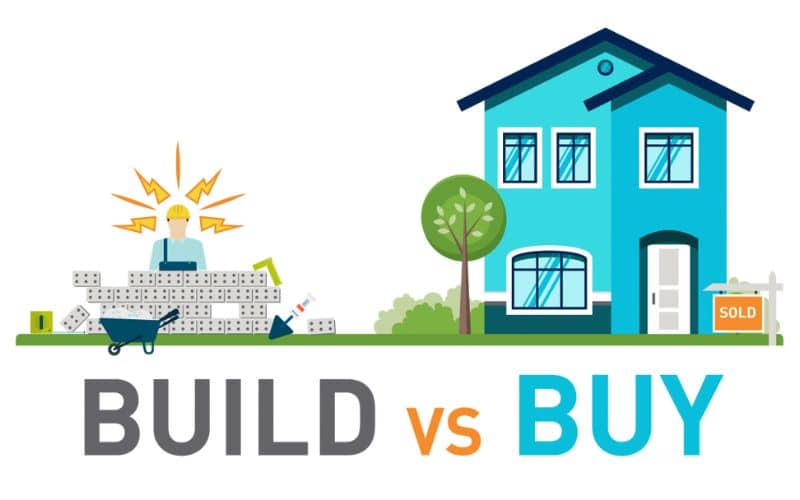
(i) When Buying Makes Sense
Buying a ready-built home makes financial and practical sense for many Kenyans, especially within government-backed Affordable Housing programs or private estate developments. Homeowners can avoid the hassle of searching for prime land by strategically placing these projects near transport corridors, schools, and other amenities.
Beyond convenience, the purchase process is relatively straightforward—you avoid the stress of approvals, contractor negotiations, and construction delays. Buying also provides a predictable cost structure, with most developers offering flexible payment plans or mortgages tailored for first-time homeowners. This option is particularly appealing for individuals who need to move in quickly without the uncertainty of project timelines.
(ii) When Building Wins
On the other hand, building a house in Kenya allows for complete customisation. You can shape your home according to your needs and long-term vision, from the layout of the rooms to the choice of finishes, roofing, and even energy-saving features like solar systems. Building also allows for phased construction—you can start with the foundation and superstructure, then complete finishes or add extensions later as your budget allows.
This flexibility makes it especially attractive to families who are building gradually with savings rather than relying heavily on financing. If you own land, the cost advantage becomes even clearer: constructing your house can be significantly cheaper than buying a finished unit of the same size and quality in the open market.
(iii) A Quick Reality Check
Still, weighing the total cost of ownership is essential whether you buy or build. Buying an apartment, for instance, might come with service charges for security, garbage collection, and standard area maintenance, while building a standalone home shifts those responsibilities directly to you. Appreciation potential is another key factor: houses in well-planned suburbs or near growing infrastructure hubs tend to rise in value faster than isolated rural plots.
Lastly, consider the time-versus-control trade-off. Purchasing a property offers speed—you can move in within months. While slower and more demanding, building gives you greater control over design, quality, and satisfaction in the long run. Both paths can lead to homeownership success, but the best choice depends on your financial readiness, lifestyle, and patience.
Step 9: Challenges and Solutions in Building a House in Kenya
Like any major investment, home construction has challenges:
| CHALLENGE | WHAT IT LOOKS LIKE | PRACTICAL FIX |
| Price volatility | Cement/steel spikes derail the budget | Lock prices early; buy in batches; QS escalation clauses |
| Permit delays | Weeks stretch to months | Submit complete packs; follow up weekly; Hire an architect familiar with the county’s portals. |
| Labour quality | Rework, slow progress, poor finishes | Prequalify crews; sample work areas first; pay by milestones. |
| Cash flow gaps | Work stalls mid-project | Align disbursements to milestones; keep 10–15% contingency |
| Scope creep | “Let’s add a pergola…” | Change control log; QS prices variations before approval |
| Site theft/damage | Lost cement, stolen fittings | Secure storage, night guard, and records for all deliveries, |
| Defects after handover | Leaks, cracks, and sticking doors | Retain 5–10%; enforce defects liability; schedule a 6-month check. |
Solutions include bulk-buying materials, working with reputable professionals, and setting aside a contingency fund.
Step 10: Practical Tips for First-Time Builders
Lastly, here are some practical tips to consider before you begin building a house in Kenya for your next step:
- Start with a brief: Begin by outlining a needs brief that includes bedrooms, potential future extensions, and lifestyle considerations such as a work-from-home space and a rental annexe.
- Design to your plot: Good orientation reduces cooling/lighting costs due to factors such as sun path, prevailing winds, views, and privacy.
- Right-size rooms: Bigger isn’t always better; innovative layouts reduce wasted corridors and cost per m².
- Block the rework: Finalise tile and paint selections on paper with the architect; mock-ups prevent regrets.
- Buy once, cry once: Prioritise critical components (roofing, windows, waterproofing) over showy fittings.
- Insist on testing: Pressure tests (plumbing), insulation checks (roof), RCD/earthing tests (electrical), and water-tightness (wet areas).
- Document everything: Approvals, inspections, delivery notes, payments, change orders—filed and backed up.
- Visit sites before you build: Tour comparable projects; ask owners what they would do differently.
- Plan for services: Backup water tanks, solar pre-wires, and inverter provisions—it’s cheaper to rough in now than retrofit later.
- Handover discipline: Snag list, training on systems (inverter, pump), warranties, and as-built drawings.

Conclusion: Turning Your Dream Into Reality
Learning how to build a house in Kenya is a rewarding journey that combines careful planning, patience, and financial discipline. From land acquisition and approvals to selecting quality building materials and managing the house construction process in Kenya, each step shapes your outcome.
The good news is that the process becomes less stressful and more fulfilling with proper planning and a trusted team. Whether you’re eyeing affordable housing in Kenya or a luxury mansion in Nairobi, your dream home is achievable with the appropriate guidance and preparation. As more Kenyans embrace property ownership, this evergreen topic remains central to achieving long-term financial security and family stability.
Call to Action
Are you ready to make your dream home a reality? If you need an expert in the building approval process in Kenya, email me directly at dennis@constructionfrontier.com. I will help you realise your project. Otherwise, get expert insights, guides, and the latest construction trends at ConstructionFrontier.com.

